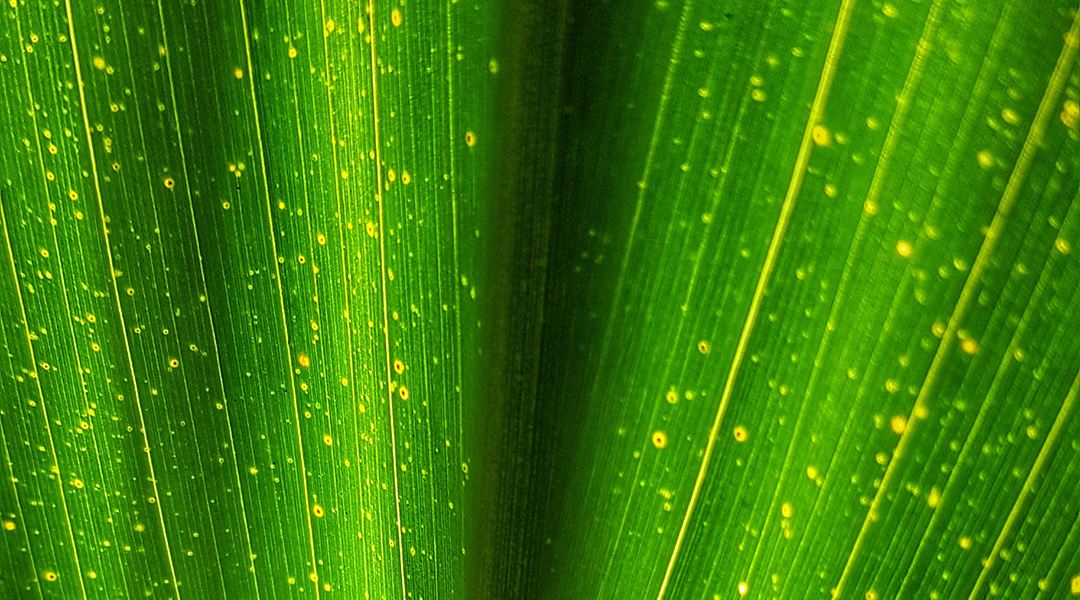What if we could use proteins to create biohybrid electronics? Integrating photoactive biomaterials into electronics, where light captured by a molecule is converted to changing electrical signals, is a promising area of research.
“Optoelectronic devices based on interfacing biomolecules with existing molecular electronic materials have generated great interest both in terms of being eco-friendly, low-cost next-generation electronics based on novel computing principles,” wrote a team of researchers led by Ivan Bobrinetskiy and Dafydd Jones in a paper published in the journal Advanced Functional Materials.
Critical to developing such devices is establishing and effective protein–nanomaterial interface. To do this, Jones, Bobrinetskiy, and their teams designed an interface in which the photoactive green fluorescent proteins (GFP) was linked to an individual carbon nanotube to achieve “communication” between electronic materials and biomolecules.
“Proteins are nature’s own nanomachines that self-assemble to form these wonderful molecular structures with range of different functions — everything from energy conversion to catalysis to communication,” said Jones in an email to ASN. “Ever since I got involved in synthetic biology, I was always worried that the area was focusing on what physics and chemistry could do to help biology, whereas I thought the opposite: How can the molecular features of proteins impact and inspire physics and chemistry?”
Combining electronics and biology
GFP is an important protein in biology, especially in cell imaging as a genetically encoded fluorescent probe. It was chosen for these devices as it can be easily triggered to fluorescence on application of visible light. In other areas of research, this has allowed scientists to follow and elucidate important biological processes by observing molecular events inside cells, for example, with great detail.
“However, the way in which fluorescent proteins work is far more complex, with a lot of ‘to-and-fro’ of subatomic particles, like electrons and protons,” said Jones. “We thought that we could use this useful feature to change the electronic conductance of an underlying material — in this case nanotubes.”
The team was interested in making use of the singular molecular features of GFP, adjusting it according to their tailored sensor design. They were able to combine different resources and expertise to design and build their bio-optoelectronic transistor, where the main challenge lay in interfacing the proteins with the non-biological materials — carbon nanotubes — in order to obtain precise electronic signals.
“Ideally, we would like a homogeneous system with the protein attached in a defined and designed manner,” explained Jones. “The latter is important as it can determine how the functional center of the protein communicates with the carbon nanotubes, which is what proved so crucial for the present study.”
To overcome this problem, the team incorporated new molecular entities into GFP by reprogramming the protein’s basic genetic code to introduce a non-natural amino acid called p-azido-L-phenylalanine, which contains a specific chemical group that can be used to form a link between the proteins and nanotubes. This happens through phenyl azide photochemistry, where the phenyl azide group (Ph-N3) built into the modified GFP becomes activated under UV light and expels a nitrogen molecule, leaving behind a nitrogen radical called a nitrene, which then forms a covalent bond with the carbon nanotube layer.
“We chose phenyl azide chemistry as it is not present in biology so gives us carte blanche to incorporate it into GFP wherever we wanted but can be activated by UV light and inserted covalently onto the carbon nanotube,” explained Jones. Through this chemical reaction, they were able to bind the modified GFP to their nanotubes.
The technique is extremely efficient, demonstrating the potential of GFP to modulate electrical currents in different ways depending on its attachment to the carbon nanotubes. This can lead to different device functionalities, such as the ability to behave as an optical transistor and optical memory device. “The protein and its core function are the same in both cases, but how we interfaced the protein to the carbon nanotubes in terms of the distance and orientation of the active center of GFP proved crucial,” added Jones.
To assemble the device, individual semiconducting carbon nanotubes were placed between electrodes in a field-effect transistor configuration. “Though the lab-based technology is well developed for manipulation of individual nanotubes, we aimed to scale the technology in this research,” said Bobrinetskiy. “The aerosol-based deposition was performed to form the statistically relevant distribution of nanotubes onto the 4-inch substrate that results in about 400 chips. The chips, which demonstrate semiconducting properties were then modified with the fluorescent protein.”
Biohybrid electronics
The biohybrid device demonstrated efficient light-induced direct charge transfers at the protein/nanotube interface, laying the groundwork for hybrid sensors with future potential as optically operated memory, fluorescent readout, and molecular transistor devices, as well as eco-friendly interfaces based on photo-activated proteins and electrodes.
The researchers indicate that they would like to see their biohybrid electronics replace classical semi-conductors, but that we are still a long way off from achieving this.
“I would personally like to switch from side-wall interactions to proteins acting as bridges between two carbon nanotubes, so they are directly modulating current flow through the protein,” said Jones.
“Of course, advanced bio-nano-electronic devices where computation and storage of information are defined by changes in the states of biological molecules is an ultimate goal of the research,” added Bobrinetskiy. “But in mid-term application our findings can be used, for example, in ‘green’ solar cells based on fluorescent proteins. Our results can give insight in proper protein orientation for maximum efficiency of bio-inspired solar cells.”
Reference: Rebecca E. A. Gwyther, et al., Differential Bio-Optoelectronic Gating of Semiconducting Carbon Nanotubes by Varying the Covalent Attachment Residue of a Green Fluorescent Protein, Advanced Functional Materials (2022). DOI: 10.1002/adfm.202112374
Feature image credit: Vlad Kutepov on Unsplash

















